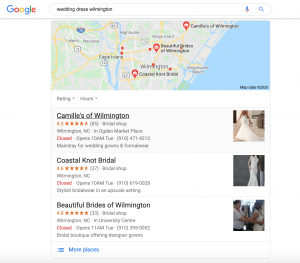It’s wild to think that the first email was sent 40 years ago, and even if we’ve moved on to texting and social media, we still haven’t replaced this mode of communication. Email marketing is still a dependable marketing channel for so many businesses looking for meaningful results—whether that’s building trust, nurturing leads, or converting contacts into customers.
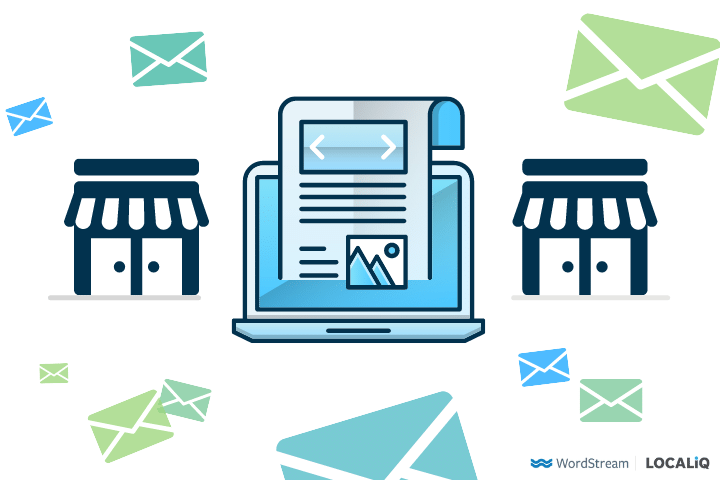
That’s why today we’re going to share the seven B2B email marketing rules you need to follow—plus some examples for inspiration. Let’s get started.
B2B email marketing rules you need to follow
There are lots of email marketing tips or email marketing best practices that work for B2B just as well as B2C marketing plans. And we definitely encourage you to try out those techniques.
But before you start experimenting with strategies that might work for your business, you need to start following the rules that will improve your B2B email marketing. Herime are the seven you need to know.
1. Segment your audience
I’m sure all of your emails are great. But not every email is going to work for every contact in your database. That’s why you absolutely need to segment your audience for your B2B email marketing.
When you segment your audience, you can get more specific about your copywriting and your offer. For instance, if you’re sending only to your contacts in the Northeast US, you can reference the start of summer in July. If you’re sending only to you’re sending only to contacts who previously made a purchase, you can offer a discount code to re-engage them.
And those are just two quick examples of endless possibilities to personalize your B2B emails and make them more appealing to your audience.
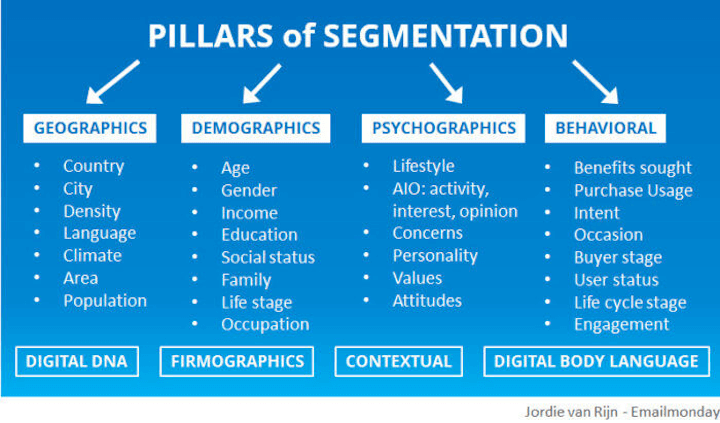
And making your emails more appealing to your audience can bring in real results for your business. In fact, marketers who segment their email marketing campaigns report a 760% increase in revenue.
That makes segmenting your audience a rule worth following.
2. Send a newsletter
A newsletter is a great way to consistently distribute your blog posts, webinars, or other content to your database. It’s also a great way to engage with your contacts. The cadence can vary depending on your business, but whether it’s weekly, monthly, or quarterly, it’s consistent. That keeps your brand name in each contact’s inbox, and as long as you’re providing high-quality, useful content, that’ll build trust.
That’s why 31% of B2B marketers consider email newsletters the best way to nurture their leads.
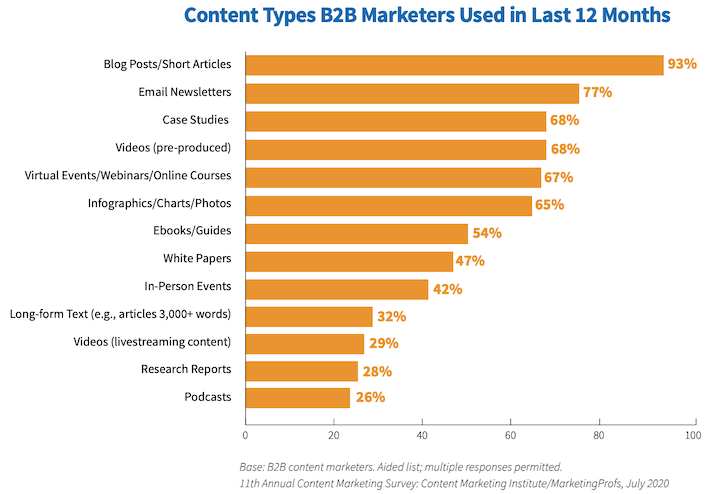
It’s no surprise that email newsletters are the second most common type of content that B2B marketers used in the last year.
There are lots of different ways to format your newsletter. If your marketing creates lots of content, you can include recent podcast episodes, videos, and blog posts. If your industry has lots of news, you can round these up in your newsletter, and you can even write a long-form email intro commenting on the most important topics. The most important thing is to figure out what works for your brand and what’s a reasonable amount of work to take one.
And if you want to take the creative route, check out these creative newsletter ideas for every month of the year. And use these creative newsletter names. Then decide on your format and get drafting!
3. Follow the law
This is more than an essential B2B email marketing rule, because there are legal consequences that any marketer needs to be aware of. In the US, it’s the CAN-SPAM Act that you need to know about. And if you’re sending emails to contacts in Europe, you’ll want to be familiar with GDPR.
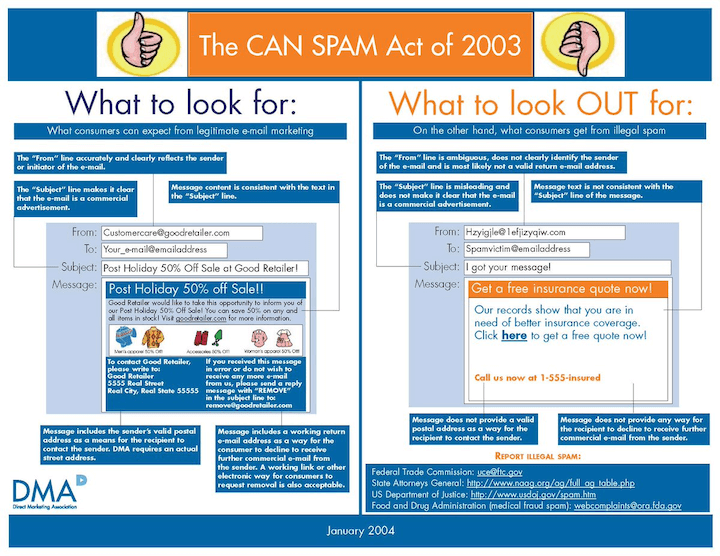
In most cases, these laws are basic. You need to include an unsubscribe link in every email. You need to honor those unsubscribe actions. You need to have a physical address in your email. You can’t mess with the email addresses—that looks spammy, and the goal is to make sure any email being sent is legitimate and not a nuisance.
4. Stick to your brand
Your B2B email marketing should be clearly coming from your brand. That’s the best way to keep your emails consistent and build brand recognition with your audience.
Take this example from Squarespace.
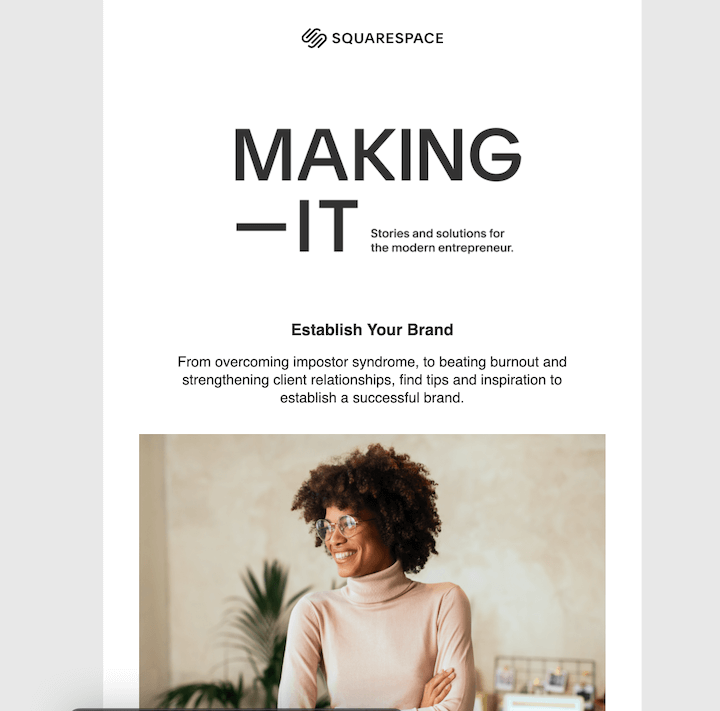
The muted background, the coordinating filter on the photo, and the soft font color—all of these fit with Squarespace’s cool, neutral brand palette. The copy fits well, too. The website builder positions its platform as a tool for entrepreneurs and artists to grow their brand and their business.
Now, this doesn’t mean that you always have to use highly stylized formats in your brand colors—you can go ahead and send a plain text email in regular old automatic font colors, too.
But it does mean that your email copy and your email content should be recognizably on-brand every time.
5. Plan your email marketing calendar
I’m biased toward this email marketing rule. If I don’t write a task down in a to do list, then I forget about it. If I don’t have a plan sketched out, then I get stressed when my team inevitably starts requesting changes. If I don’t have a to do list to look back on, I can’t tell you what I did (August 26, 2021). That’s why an email marketing calendar is essential for me.
But I think everyone can benefit from planning ahead.
An email marketing calendar will help you figure out what you need to write and when. It can also capture details that you’ll want to look back on: subject lines that you used, segments you engaged, offers you sent. This will help you analyze performance—more on this later—and it’ll help avoid mistakes like sending a noticeably similar subject line to the same group or using the same offer twice in a row.
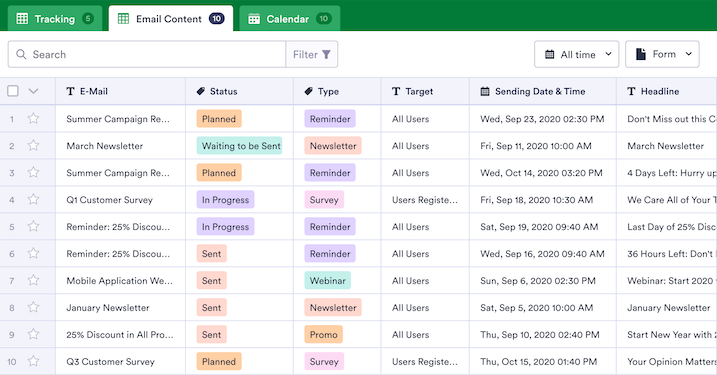
The good news is that you don’t need anything extra to set up a calendar. You can use a project management tool, like monday.com or Trello, or you can use a simple Google Sheet. The important thing is to choose something easy and quick to use. That way you’ll keep up with your calendar.
6. Focus on your copywriting
The reality is that not everyone is going to open your B2B marketing emails. Emails are one of the best marketing strategies because they allow you to control your messaging, personalize, and scale. But that contributes to the noise in everyone’s inbox. Last year, there were 306.4 billion email sent each day.
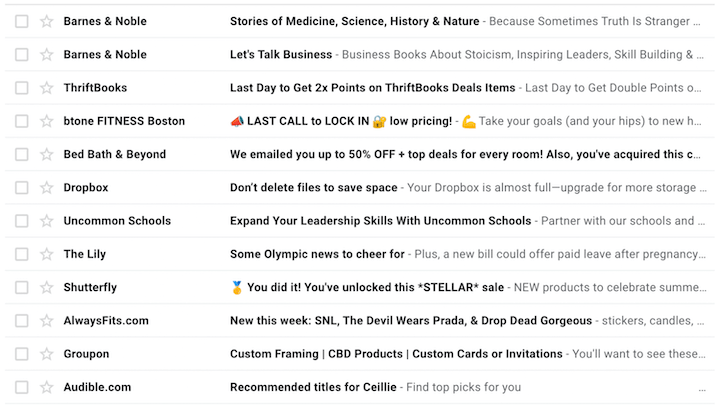
In order to compete in inboxes like these, you need to focus on your email copywriting.
Start with your subject lines, since those will impact your open rates. They should be engaging, eye-grabbing, and give just enough information to tempt your reader into opening the email. Take this great subject line from Dropbox in the image of my inbox above.

The subject line begins with a strong imperative sentence. Then, the preview text explains that this action isn’t needed because Dropbox is offering a different solution—inside the email.
For the body of your email, make sure your goal is clear so that you’re writing towards it and leading up to a single CTA. Plus, plan some proofreading time for every email. It never hurts to take a second look, and best case scenario you avoid any embarrassing typos or mistakes.
And if you’re looking for more tips, check our post on the email copywriting tips that we swear by.
Keep testing
All of these B2B email marketing rules help you send better emails—with more personalization, more regularity, or stronger copy. But in order to keep improving your emails, you need to keep testing to find out what works for your audience.
The best way to do this is to run regular A/B tests. An A/B test is a common exercise where you change one variable in an email send and see which version performs better.
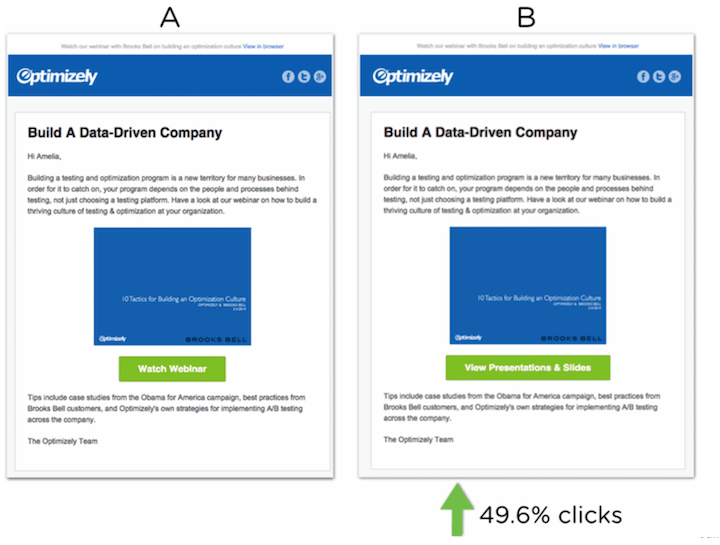
Here are some common variables to test:
- Subject lines
- Preview text
- CTAs
- Email design
- Offer
- Send day
- Send time
Because these are common, we’d recommend starting with these. Once you get to know your audience better, you can get even more specific with your tests—like to find out whether subject lines with emojis perform better or which color CTA button gets more clicks. The more you know about what your audience is looking for in their emails, the more you can tailor your marketing and improve your metrics.
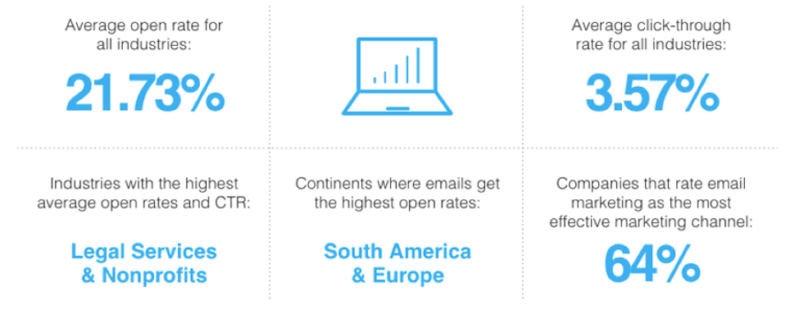
Our favorite B2B email marketing examples
Now, all those rules sound easy enough to follow, but what do they look like in action? Here are a few B2B email marketing examples that caught our eye—so that you can see the rules working in real emails and get some inspiration for your own.
Example #1: DocuSign’s product features
I’ll be honest, I don’t think about DocuSign too often. But that subject line from DocuSign caught my eye, and so did this email that showed up in my inbox while I was writing this article. Take a look.
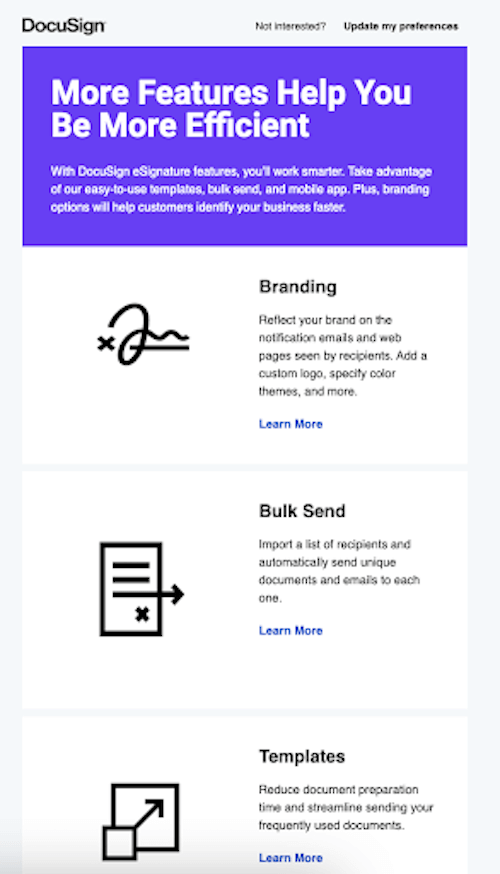
This design is clean, with the simple format and the iconography that fits DocuSign’s brand. The copy is working here, too, promising that the product can help me—and other email readers—save time and work more efficiently.
Plus, DocuSign includes an unsubscribe right at the top. The “Not Interested?” question is nice and casual, too. Knowing there are no hard feelings makes me like DocuSign more and want to read to the bottom.
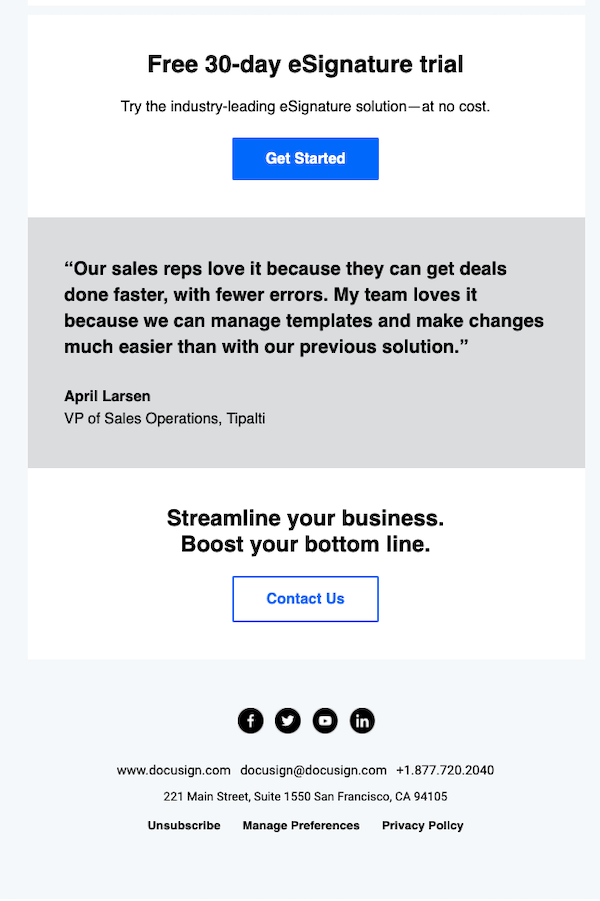
Including a customer testimonial in a product email is a great tactic (and a good example of marketing psychology). It’s subtle here, which makes it clear that it’s supporting the product features above, not the primary reason to convert. Another great tactic here? Alternating the colors of the CTAs to prevent them from getting stale in an email with multiple buttons. Well done.
Example #2: Semrush’s free course
Here’s an excellent email from Semrush a few months ago, shortly after signing up for a free trial:
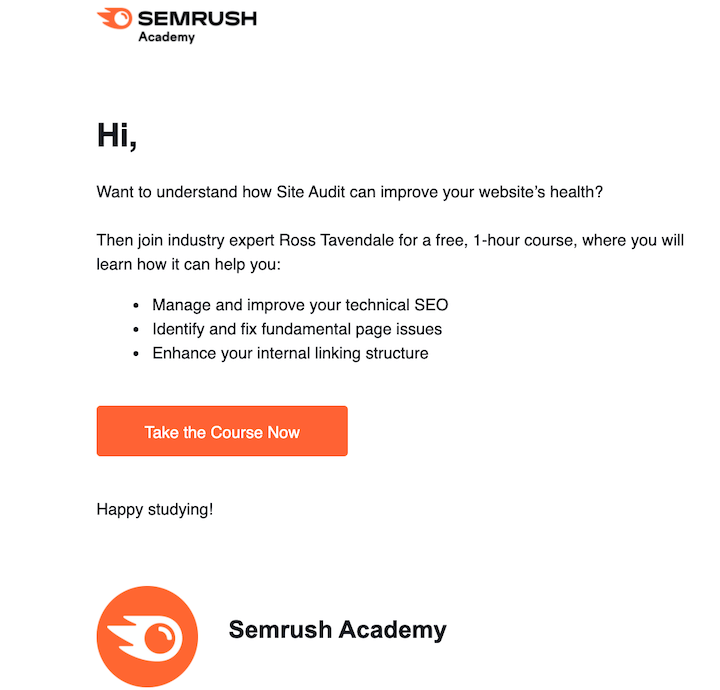
The contrast with the orange and black brand colors looks clean and bright; the two logos and brand name makes this look crisp and official. The email opens with a question—an amazing reminder that emails are actually two-way modes of communication. Then, the rest of the email copy itself is straight to the point. It details the course and breaks down the benefits with some persuasive framing, like “fundamental pages issues” and “improve your technical SEO.”
For me, though, it’s the sign off: “Happy studying!”
It’s unexpected, it’s upbeat, and it’s relevant to the content of the email.
Example #4: Sprout Social’s social media report
This email’s subject line stood out to me right away: “89% of consumers will buy from brands they follow on social.” It’s a compelling, complete statistic about social—and I wanted to see what else the email said about it.
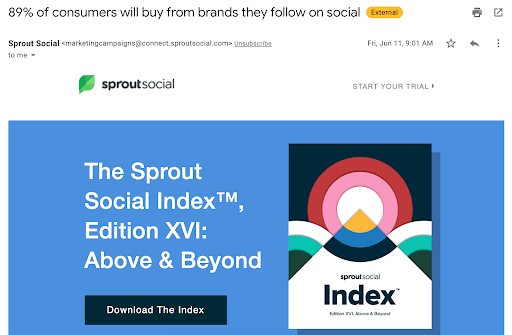
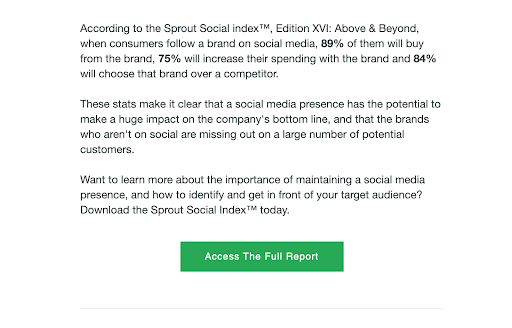
The email header has everything you need to know: Sprout Social pulled the stat from this report that you can download now. But if you keep reading, you learn more about the report, including more stats. I like how Sprout Social highlights this extra information by making these numbers bold. It catches your eye if you’re skimming—which, let’s be honest, most of us are.
Follow these rules for stronger B2B email marketing
That was a lot, so to recap, here are the B2B email marketing rules that you need to follow to improve your performance and engage your contacts:
- Segment your audience
- Send a newsletter
- Follow the law
- Stick to your brand
- Plan your email marketing calendar
- Focus on copywriting
- Keep testing
Now, go get started. Good luck!
Digital & Social Articles on Business 2 Community
(35)

